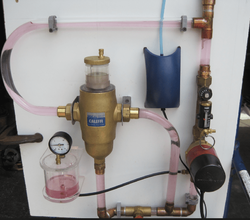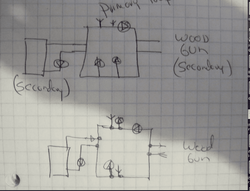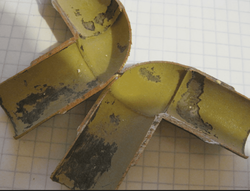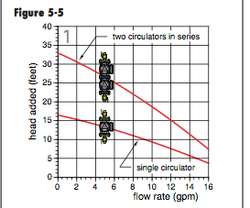I think I have air in my system. I have a primary/secondary loop. The oil burner and wood gun are tied into it.

By infinitymike at 2011-11-15
The two black pipes on the right are from the wood gun.
The returns tees of both units tap into the top of the loop with the supply tees only 4 inches below it.
The loop circ rotates the water counterclockwise.
There are bleeder valves all over the place.
This is the second day onliine.
Last night it was holding 190* at 18 psi.
It didnt fire all day, in the 60's here, but I lit a fire about an hour ago and it come up to temp quickly.
I raised the t-stat to call for heat and when I went to the wood gun there was rushing, bubbling, percolating water sounds .
I shut the return valve of the wood gun at the loop and opened the drain valve on the return line of the wood gun.
The pressure dropped to zero which I assume would be correct. the water was clear and I shut the drain valve.
But there is still alot of noise in the primary loop. Not bubbling or percolating sounds but just a sound of rushing water.
what do ya think

By infinitymike at 2011-11-15
The two black pipes on the right are from the wood gun.
The returns tees of both units tap into the top of the loop with the supply tees only 4 inches below it.
The loop circ rotates the water counterclockwise.
There are bleeder valves all over the place.
This is the second day onliine.
Last night it was holding 190* at 18 psi.
It didnt fire all day, in the 60's here, but I lit a fire about an hour ago and it come up to temp quickly.
I raised the t-stat to call for heat and when I went to the wood gun there was rushing, bubbling, percolating water sounds .
I shut the return valve of the wood gun at the loop and opened the drain valve on the return line of the wood gun.
The pressure dropped to zero which I assume would be correct. the water was clear and I shut the drain valve.
But there is still alot of noise in the primary loop. Not bubbling or percolating sounds but just a sound of rushing water.
what do ya think





